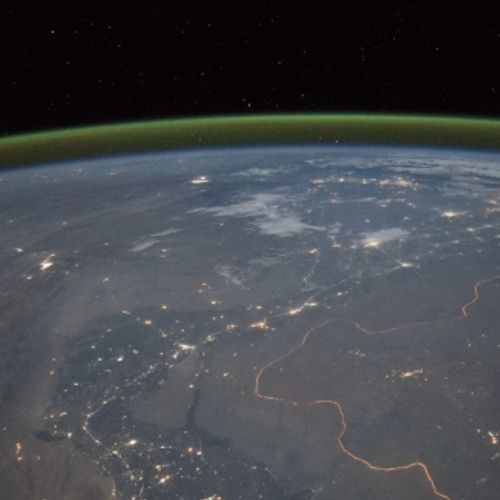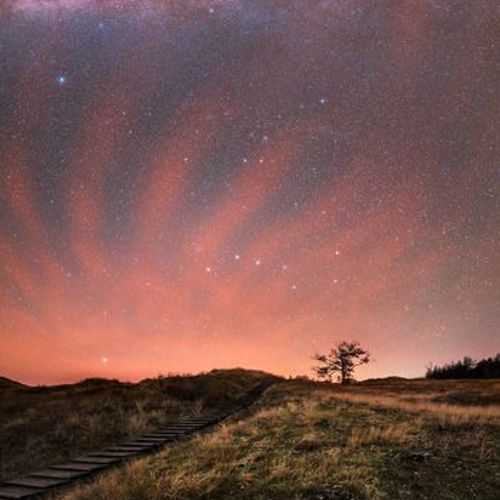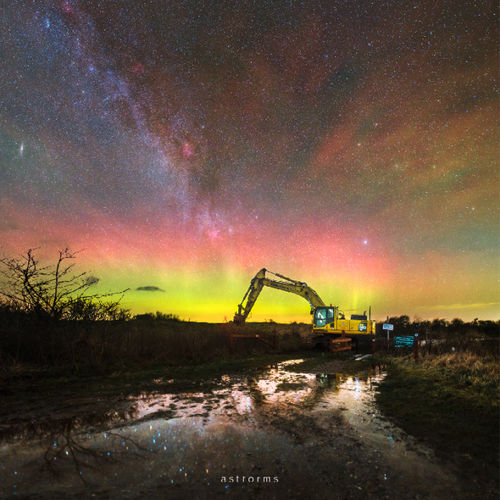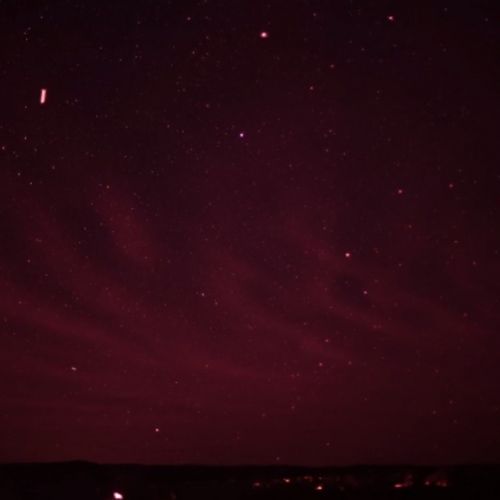
| Added | Wed, 09/11/2016 |
| Sources | |
| Феномены | |
| Version type |
The natural phenomenon known as a private glow of the atmosphere (eng. airglow) was opened in 1868 by Swedish scientist Anders Ångström.
This celestial glow of nature happens all the time and around the globe. There are three type: fluorescent (dayglow), twilight (twilightglow) and night (nightglow). Each of them is the result of the interaction of sunlight with molecules in our atmosphere, but has its own special method of formation.
Fluorescent glow is produced, when the sunlight falls on the atmosphere in the daytime. Some of it is absorbed by molecules in the atmosphere, giving them excess energy, which they then release as light, either on the same or at a slightly lower frequency (color). This light is much weaker than normal daylight, so we can't see with the naked eye.
The twilight glow is essentially the same as daylight, but in this case, the Sun illuminated only the top layers of the atmosphere. The rest of it and observers on Earth are in the dark. Unlike day-glow visible to the naked eye.
Night glow is generated not by sunlight falling on the night atmosphere, and other process called chemiluminescence method. Sunlight during the day accumulates energy in the atmosphere containing oxygen molecules. This additional energy makes the oxygen molecules to break up into individual atoms. This is mainly at an altitude of about 100 km.
Unlike the polar lights, night glow spread across the sky and uniform.
The brightness correlates with the level of ultraviolet (UV) light coming from the Sun, which varies over time. The strength of the glow depends on the time of year.
To increase your chances of finding a heavenly glow, you should capture a dark and clear night sky in long exposure mode. Glow can be seen in any direction, free from light pollution, about 10-20 degrees above the horizon.
The sky lights up like a giant rainbow multiple. Various perturbations, for example, an approaching storm can create in Earth's atmosphere ripples, like waves. These gravitational waves – fluctuations in the surface layers of air and is similar to the waves caused by throwing a stone in calm water.
Photo with a long exposure, taken in the direction of the vertical layers of the glow of the atmosphere, made this wavy structure visible.
The mechanism of this phenomenon is the following. During the day solar radiation (sunlight) breaks down air molecules into atoms (charged atoms, ions), electrons are knocked out. When the ions meet again (or attract the electron) — molecule is formed, and the excess energy leaves in the form of light. The altitude of 80-120 km are recombined, mainly oxygen molecules and sodium and emitted green and yellow light, respectively; at an altitude of 250-300 km occurs for the electron-ion recombination, but radiation of this layer lies in infrakrasnoi (invisible) region of the electromagnetic spectrum.
The most common mechanism leading to the appearance of the glow is connecting the nitrogen atom with an oxygen atom to form the molecule of nitric oxide (NO). During this reaction the emitted photon. Other substances that can contribute to the glow of the sky, are the hydroxyl radical (OH), molecular oxygen, sodium and lithium. A dark red glow, is likely to form molecules of OH, located at an altitude of about 87 miles and excited by ultraviolet solar radiation. Orange and green glow comes from the sodium atoms of kisloroda just above.
Translated by «Yandex.Translator»
Related news
Log in or register to post comments
















